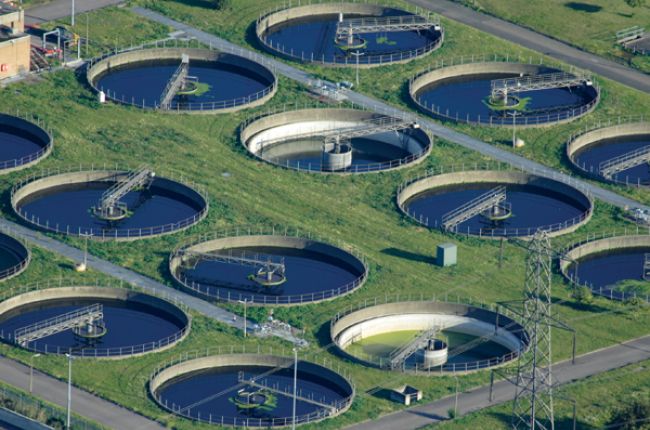Reliable Waste Water Treatment Equipments: Trick Approaches and Advantages
Strategic Approaches to Improve Waste Water Treatment Performance and Minimize Environmental Effect
In the world of waste water treatment, the mission for enhanced performance and lowered environmental impact is a perpetual obstacle that demands calculated services. The assimilation of advanced treatment technologies, energy-efficient processes, source healing approaches, improved nutrient removal techniques, and clever surveillance and control systems stands for a diverse structure for addressing these pressing issues.
Advanced Treatment Technologies
Cutting-edge membrane layer filtering systems have revolutionized advanced wastewater therapy processes, substantially improving the elimination of contaminants. This modern technology has actually shown to be extremely effective in removing a wide range of contaminants, consisting of drugs, hefty steels, and organic substances, which are typically testing to get rid of via standard therapy approaches.
In addition, membrane filtration systems offer many advantages over conventional therapy strategies. Furthermore, these systems are very flexible and can be easily integrated into existing treatment plants or used as standalone devices for decentralized applications.
Energy-Efficient Procedures
The combination of energy-efficient processes in wastewater treatment systems is crucial for optimizing source use and reducing functional costs. By executing energy-efficient modern technologies, treatment plants can substantially reduce their carbon footprint and general environmental effect. One essential method to improving power effectiveness in wastewater treatment is the use of innovative oygenation systems, such as great bubble diffusers or surface area aerators, which can improve oxygen transfer performance and reduce power consumption. Additionally, incorporating power recuperation systems, like anaerobic food digestion for biogas production or using excess warm for thermal procedures, can help offset energy requirements and advertise sustainability.
In addition, optimizing process control and automation through making use of innovative sensing units and monitoring systems can enhance overall energy effectiveness by changing operations in real-time based on actual demand and conditions. Carrying out energy audits and on a regular basis checking power efficiency signs are vital techniques to recognize locations for renovation and track energy-saving initiatives effectively. On the whole, the fostering of energy-efficient procedures in wastewater treatment not only profits the setting however likewise contributes to long-lasting expense savings and functional sustainability.
Source Healing Techniques
With an emphasis on optimizing source application and sustainability in wastewater therapy systems, the implementation of source healing techniques becomes a crucial element in enhancing operational efficiency. Source healing strategies in wastewater therapy include the identification and removal of useful resources from the waste stream, therefore turning what was when taken into consideration waste into a beneficial property. By implementing resource healing techniques such as nutrient elimination and recovery, power generation from raw material, and the manufacturing of reusable water, wastewater therapy plants can minimize ecological influence while optimizing efficiency.

Improved Nutrient Removal Strategies
Carrying out advanced nutrient elimination techniques is crucial for enhancing the efficiency of wastewater therapy systems. One of the key methods used for improved nutrient removal is the procedure of biological nutrient elimination (BNR), which involves the removal of nitrogen and phosphorus via biological procedures.
Along with BNR, progressed treatment approaches such as membrane bioreactors (MBRs) and created wetlands can likewise be used to improve nutrient removal effectiveness. MBRs utilize membrane layers to achieve high-quality effluent requirements by efficiently getting rid of nutrients and suspended solids. Built marshes mimic all-natural wetland processes to eliminate nutrients through plant uptake, microbial activity, and sedimentation. By incorporating these sophisticated nutrient elimination techniques right into click here for more info wastewater treatment markets, systems and municipalities can efficiently minimize nutrient air pollution and shield the environment.
Smart Tracking and Control Systems
Utilizing advanced modern technology, the assimilation of clever tracking and control systems transforms the operational effectiveness of wastewater therapy centers. These systems incorporate innovative sensing units and data analytics to constantly keep an eye on essential criteria such as pH degrees, turbidity, dissolved oxygen, and circulation prices in real-time. By gathering and evaluating this information, operators can obtain useful insights into the efficiency of the treatment procedures, allowing aggressive modifications to optimize therapy efficiency.
Smart surveillance and control systems likewise sustain remote tracking abilities, allowing operators to access real-time data and control features from off-site locations. This remote ease of access improves functional flexibility and responsiveness, making it possible for swift treatments in case of system breakdowns or fluctuations in influent high quality. The anticipating maintenance capacities of these systems assist protect against equipment failings and decrease downtime, ultimately boosting the total reliability of wastewater treatment procedures.
Verdict
To conclude, tactical approaches such as sophisticated therapy modern technologies, energy-efficient processes, resource healing approaches, enhanced nutrient removal methods, and wise surveillance and control systems play an essential role in improving wastewater therapy performance and decreasing ecological impact. By implementing these techniques, wastewater treatment plants can enhance their general performance, minimize energy intake, recoup beneficial sources, and ensure conformity with ecological policies. These strategies are crucial for lasting and reliable wastewater administration practices.

In verdict, calculated strategies such as sophisticated treatment modern technologies, energy-efficient processes, source recuperation techniques, boosted nutrient elimination methods, and clever monitoring and control systems play a crucial function in boosting wastewater treatment performance and lessening ecological impact.